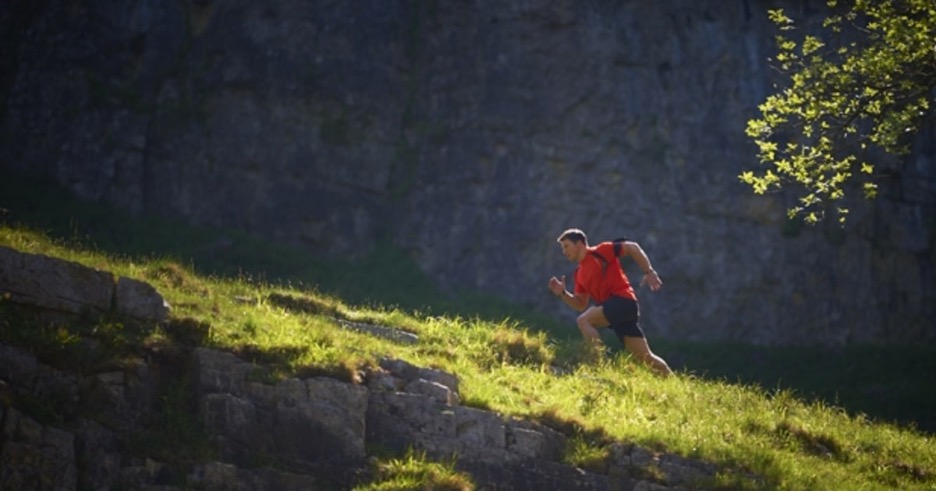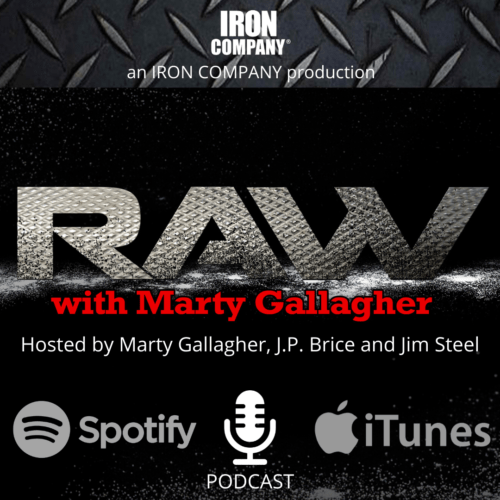
Athletic transference, or lack thereof
Being good in one athletic undertaking does not necessarily mean JACK in other athletic pursuits
Ill-prepared: A hellacious 45-degree, half-mile long, never-ending upward slog “Somebody get me a doctor!”
I had high hopes and great expectations coming into my spring transformational campaign. Coming off the winter I am usually at my heaviest bodyweight due to all the rich and delicious winter foods and reduced cardio activity. I am fine with this. I get thick and strong in the winter. Spring and summer are the ‘whittle down,’ leaner and lighter months; late fall and winter are the strength-building and mass-building months.
This year, I rolled into spring weighing 195, down 15-pounds over last year this time. I had tightened up and lightened up and had made good use of my venerable push-pull fan bike over the winter. Stacy found an excellent heart rate monitor for my phone, Polar Beats. She got me a chest strap for $20 online and I was off to the push-pull stationary bike races, effortlessly tracking and logging every session with finite precision.
I was regularly busting out age-related heart max sessions of 90% + (my session report card) using the push-pull bike. I worked out some new “burst” (interval) push-pull protocols that kept stationary biking semi-interesting. I would sit down, stand up, pedal forward, pedal backwards, legs only, arms only, one leg coupled with the off-side arm, switch sides, etc., I had WATTS personal records in each identifiable technique (arms and legs, forward, sitting: 8.2 WATTS)
After riding the bike and attaining and maintaining a high heart rate for a protracted period, once the session was over my 90% heart rate plummeted to 70%, quickly and predictably. Once I pushed the button and ended the cardio session, I locked in the stats for the session and immediately would Zen-out to see how quickly I could regain normal breathing.
I routinely attained a 20+ beat-per-minute drop in one minute. Out-of-shape people can get their heart rates jacked-up quite easily but have a terrible time regaining heart rate and respiratory normalcy. This is dangerous territory for the unfit. The fast-dropping heart rate post-exercise is highly desirable. Pay attention to your ‘drop off’ rate: how fast do regain normalcy after a cardio stress test?
I had big expectations when the dry weather finally arrived. I would get back to outdoors jogging, running, and sprinting - but lighter, leaner, fitter, than any spring in recent memory. I traverse a 155-acre farm in good weather and shut down outdoor running from January until April. I will not run if there is snow on the ground or when the ground is frozen, wet, or covered with leaves that obscure potholes, roots and trip hazards.
I never run on concrete or hard surfaces. All my running is trail running on either ground or grass. From a foot health perspective, trail and grass running is ideal. Every footfall is different and that is a good thing. This forces the foot contacting the earth to absorb and accommodate different landing surfaces. On concrete, with every stride, the foot slaps the same hard and unyielding surface in the same way. This is a recipe for repetitive motion injury.
Every stride I take on my near-daily good weather runs are done with flat soled shoes. I feel the earth. Every footfall is felt and uneven, a wonderful thing for foot health. I avoid shin splints so common to those that slam their thick rubber soled marshmallow “athletic shoes” on hard surfaces.
I run game trails. I run on dirt or grass. Best of all, I run on woodchips. When the good weather finally arrives, when our moist mountain climate dries out, I mix things up: I take long runs of 40-50 minutes three to four times a week and I sprint, hard, twice a week. When I sprint, I run on a woodchip covered trail that is straight and flat and runs for 150-yards under a wonderful tree canopy that keeps me dry even in light rain. Sprinting on a woodchip-covered trail is, I would imagine, akin to running on clouds.
On my glorious first day of outdoor farm running, I took my lightened and streamlined body out for a test run. I was expecting world records right out of the box. Within 25 yards of commencing my first real run, I knew something was terribly wrong. All my fantastic preconceptions flew out the window. I ran like an out-of-shape high school freshman, awkward and clumsy. I had to relearn running, which, apparently, has zero relationship to stationary bike riding.
I felt liked the unoiled (or barely oiled) tinman from The Wizard of Oz. Encountering my first steep grade was a hellish revelation. My legs died, my lungs died, everything in me died. Halfway up, I thought about quitting, I looked like I was running through mud. Only pride and embarrassment stopped me from stopping.
I have a series of predetermined circuits, differing running routes I can take; differing in length and topography, I decided to break in easy. On my first day back, I would do my sight-seeing route, a wonderful 40-minute circuit, mostly on the flat, that took me under the woodchip tree canopy, along a trout stream, over a scenic bridge and into a second long wood-chip-covered trail, a second sprint section. I was stiff and sluggish on the flat and knew I was in trouble.
20-minutes into my scenic run and the flat sections were done. Time to hit the steep grades. The first section is a game trail that runs upward at a 45-degree incline alongside a mini-mountain. The thin trail lies hidden, tucked inside a lush, ancient growth forest. This section runs under massive oak, pine, and walnut trees for a quarter mile. Narrow, slick, dangerous, this Billy Goat trail has 30-feet drop-offs to the left. I tell myself to not space out and slip.
During this ten-minute 45-degree hell section my eyes stay glued to the trail ten feet in front, careful not to slip and tumble. I made it through the wooded section and burst into the sundrenched cornfield. I kept running, picking up the pace. It was still steady upward, steeply, for another lung-stressing quarter mile following a curved pathway cut through the lush pines that run next to the cornfield.
I am pushing as hard as I can. My legs weigh 1,000 pounds each and they burn. My lungs cannot suck in oxygen fast enough and they burn. I feel as if I am “running” in slow motion – because I am. I finally top out at the scenic overlook. By the time I arrived at the scenic overlook on this first day, I was in need of an ambulance.
And this was only the halfway point. Somehow, I managed to drag myself through the rest of the route. After all, it was literally all downhill. 20-minutes later, done, I felt as if I had completed an ultra-marathon. How disheartening. My excellent push-pull bike efforts did not mean jack-shit out here in the woods, trotting, jogging, running, sprinting. My biking did not help my running legs or running lungs one bit.
My aerobic mentor, Dr. Len Schwartz used to always make me pose a question to myself as I performed any cardio exercise, ‘what is lagging? Legs or Lungs?’ So simple, so profound. When you begin to “struggle” put a finer point on struggle. When the going gets tough, what fades first, your legs or your lungs?
Are your legs still strong and fresh as your lungs struggle to keep up? Or are your legs exhausted and dying while your lungs are still able to supply the body with all the O2 it needs? What fades first, legs or lungs? Once you have the answer, you can skewer your training accordingly.
The athletic stresses imposed by the push-pull stationary bike are one-dimensional compared to the stresses encountered in trail running. Every revolution, every rotation, is identical using the push-pull bike. Every footfall and stride are different running flat-footed on grass, dirt, or wood chips. Uneven footfalls are a fabulously beneficial biomechanical wonderment.
The mechanically frozen motor pathway of the bike meant nothing out here in the woods. Apparently, pedaling a mechanical device in a never-varying 12-inch circle does not prepare one for the much larger range-of-motions that define trotting, jogging, running, or sprinting. Steep grades were the ultimate body killer and created stresses that were just too much for my push-pull body.
My time in my first session, the Bataan Death March session, took 46:25. I traversed this identical route in August posting a 38.31, weighing 215. The good news is that, after six sessions, I have whittled my jump-in time of 46.25 down to 42.52. I am quickly acclimatizing to the stresses, particularly the steep grades.
I put the push-pull bike to good use over the winter. It proved to be an excellent metabolic stimulator that helped me pare down to under 200-pounds. It was good activity at times of cold weather inactivity. Insofar as athletic transference, there was none. How much harder it would have been for me had I not had good attendance with the push-pull bike over the deep winter months?
My short-term goal is to get back down under 40-minutes in my sight-seeing runs, then recommence sprinting twice weekly, not before. The springtime overarching goal is to bring up my leg strength (squats, hamstring work, calf raises) while reducing my bodyweight to 185-190-pounds, thereby maximizing my power-to-weight ratio. This is a doable goal that fires me up. Do you have goals? Once you create short and long-term goals, set them into time frames and reverse engineer a starting point. As Confucius once noted, longest journey begins with single step. All journey’s need road maps.
About the Author
As an athlete Marty Gallagher is a national and world champion in Olympic lifting and powerlifting. He was a world champion team coach in 1991 and coached Black's Gym to five national team titles. He's also coached some of the strongest men on the planet including Kirk Karwoski when he completed his world record 1,003 lb. squat. Today he teaches the US Secret Service and Tier 1 Spec Ops on how to maximize their strength in minimal time. As a writer since 1978 he’s written for Powerlifting USA, Milo, Flex Magazine, Muscle & Fitness, Prime Fitness, Washington Post, Dragon Door and now IRON COMPANY. He’s also the author of multiple books including Purposeful Primitive, Strong Medicine, Ed Coan’s book “Coan, The Man, the Myth, the Method" and numerous others. Read the Marty Gallagher biography here.


